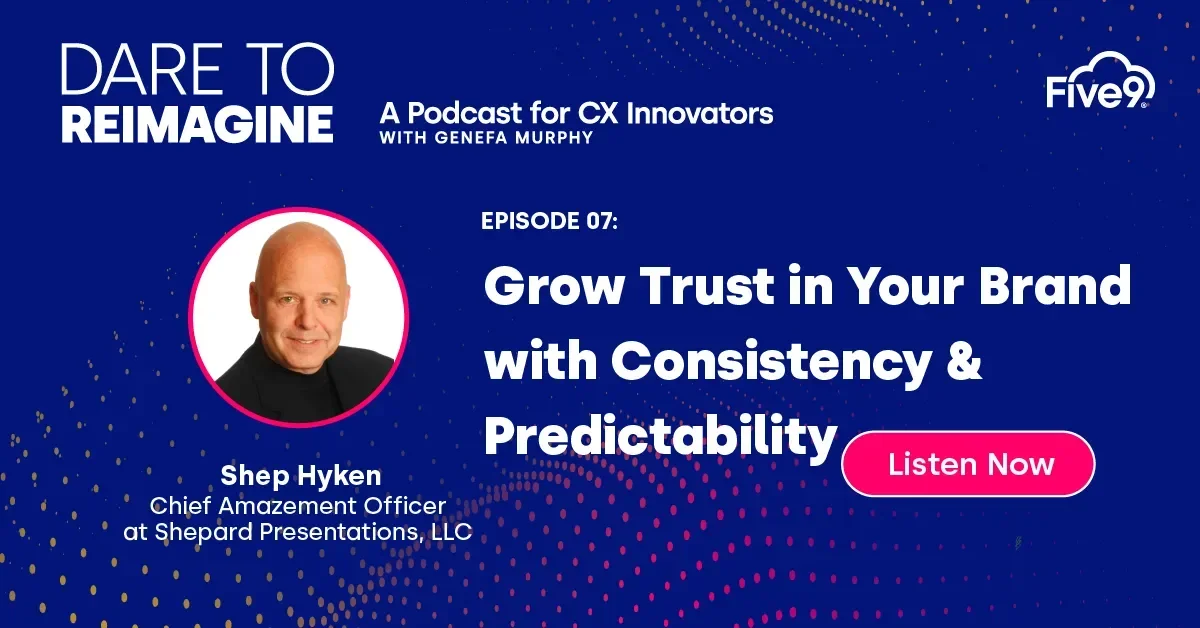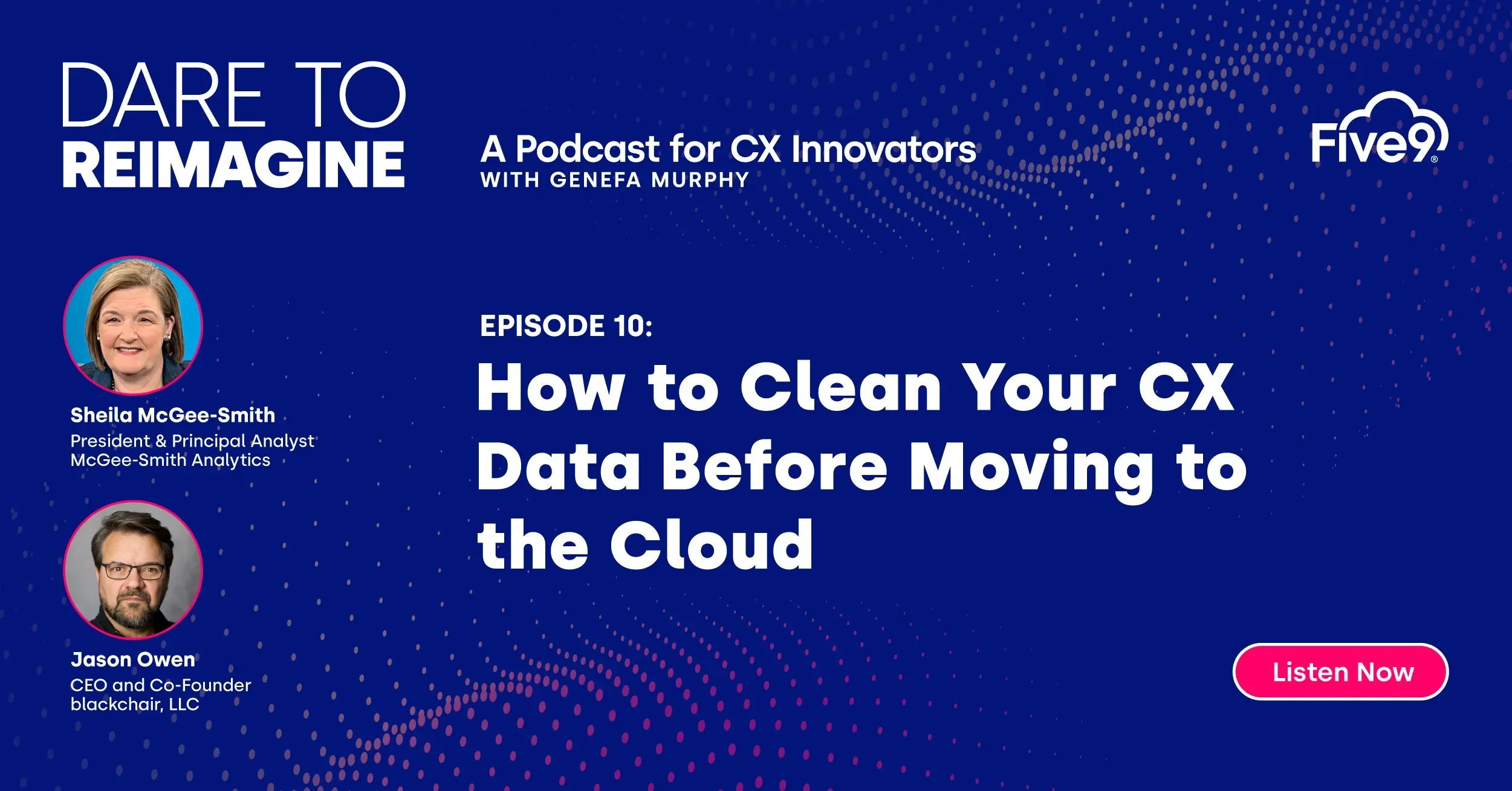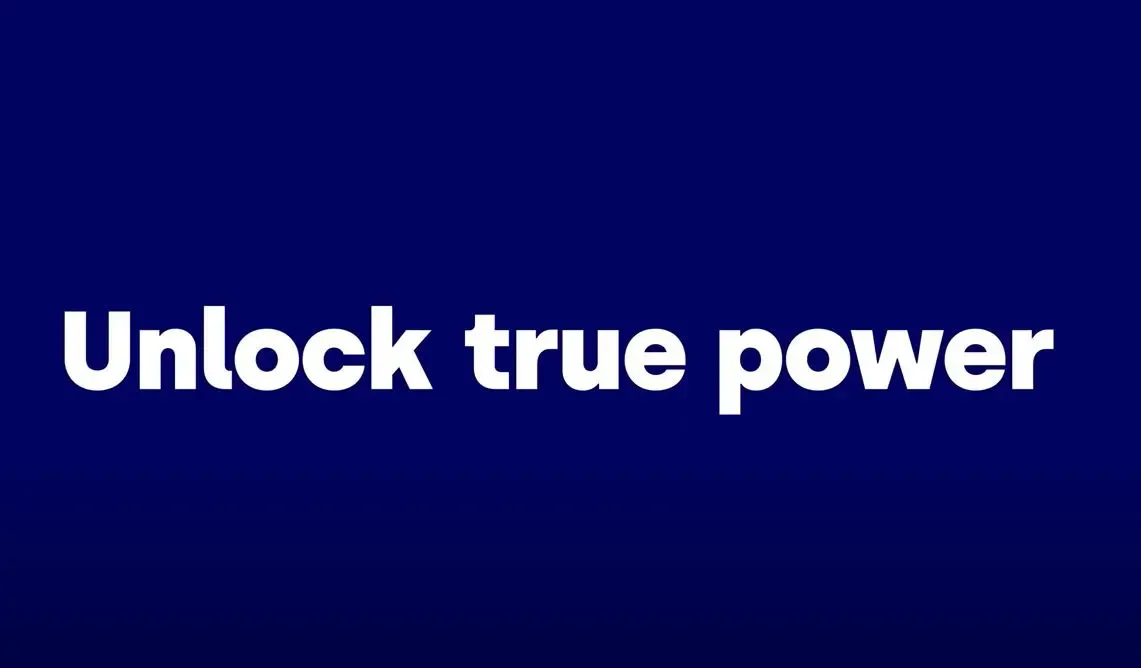
Grow Trust in Your Brand with Consistency & Predictability
Nearly half of us would rather go to the dentist than call customer support. At heart, it’s a trust issue, and consistency and predictability lies at the core of great CX.
Don’t be the root canal of CX.
Recently on Dare to Reimagine, we heard from Shep Hyken — Chief Amazement Officer at Shepard Presentations, LLC and author of I’ll Be Back — about why customer experience and customer expectations must be equal, what “skimpflation” is and how brands should respond, how to use chatbots seamlessly and effectively for great CX, and more.
Ready to rethink what’s possible in CX? Let’s go!
“We asked over 1,000 customers, ‘Would you rather go to the dentist or call customer support?’ Forty-six percent of them said, ‘I'd rather go to the dentist.’” — Shep Hyken
Matching customer expectations
Nearly half of customers — 49% to be exact — reported having more bad customer service experiences in the past year compared to previous years.
Just a few years ago, the American Customer Satisfaction Index (ACSI) suggested that every industry was showing higher levels of satisfaction. What changed?
It wasn’t the pandemic, though that didn’t make things easier.
“Some rock star companies out there are raising the bar for what customer experience is supposed to be,” Shep explained. “As a result, customers have higher expectations about what they get from any type of company in any type of business.”
The experience you create has to be on par with your customers’ expectations, and the latter are high, especially when it comes to convenience.
Addressing skimpflation
“Skimpflation” is a result of two factors: companies have been forced to skimp on customer experience because they in turn have been skimped on supply and talent.
Shep explained how to overcome skimpflation-related frustrations with a single word.
Communication.
“If you simply communicate what the issue is, what the concern is, what the delay is, what the expectation of when it will be there, the customer feels like they have some sense of control over what's going on,” he said.
Example #1
That’s right, we aren’t seating at those empty tables because we are working with reduced staff. Your wait will be less than 10 minutes, and your server won’t be stretched too thin to take care of your table.
Example #2
Your plane will land in about 15 minutes and will be ready to board 20 minutes later. You’ll be out of here at 4:30, and your pilot intends to make up time in flight.
Those examples aren’t hard to say, and they instantly make customers feel more comfortable and trusting.
“It doesn't matter what you sell, and it doesn't matter how you sell it. You need to create an experience that is on par with what your customers’ expectations are.” — Shep Hyken
Earning customer trust
Trust in people is based on transparency, but trust in brands is based on consistency and predictability.
- Give the customer the experience they want in the first place.
- Then the customer will feel confident to predict they will receive that experience in every interaction.
- Give the customer a similar experience each time.
“When you have that consistency and predictability, the word ‘always’ is used to describe something positive about the company,” Shep said.
- They're always so knowledgeable when I call them.
- They always get back to me really quickly when I email.
- They’ve always delivered on time or explained why.
- They can always fix the problem the first time I reach out.
Trust is one of the most important assets you have as a company. It’s what creates return customers.
“Consistency and predictability is what drives the trust level higher.” — Shep Hyken
Self-service tools & CX
In one of Shep’s recent surveys, 71% of people surveyed said ‘yes’ to being willing to use the digital experience.
Their preferences differed by generation. Most boomers prefer the phone first at 86%, while only 51% of Gen Z picks up the phone first. (Yet half of Gen Z reaching for the phone can sound quite surprising!)
Fortunately, self-service or personless tools and human customer support can not only coexist but also deliver excellent CX in combination.
Assess what the process is now, phone versus human versus chatbot. Then create a true support omnichannel with the goal of being seamless.
A frictionless omnichannel
The chatbot should be smart enough to know when to get a human to answer. The phone should say how long the wait time is and offer a callback option. The human should already have the customer’s information and prior communication at hand when she answers.
This is how we meet customer expectations and create consistency and predictability.
Ask yourself whether you are frustrating your customers or removing the friction for them.
Out of over 1,000 customers, 46% said they’d rather go to the dentist than call customer service. About half of us prefer dental work rather than to be put on hold, transferred, or disconnected before repeating our information to the wrong person and starting all over again.
“You need to be on the other side of that equation that makes customers say, ‘I trust them. I love them. I know when I call the company, it's going to be a great experience.’ That's predictability and consistency,” Shep said.
Find Shep on LinkedIn and be sure to grab a copy of I’ll Be Back!
Ready to rethink what’s possible in CX? Follow us on Apple Podcasts, Spotify, our website, or anywhere you get podcasts.



